
How to Install Max Trac 1.5 in. Cast Lift Blocks on your F-150
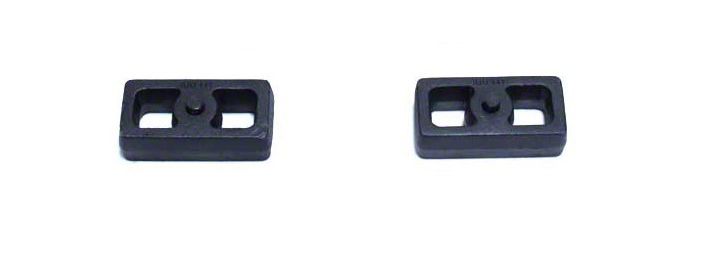
Shop Parts in this Guide
PARTS LIST
STEEL LIFT BLOCKS: 2
PLEASE DOUBLE CHECK THE PARTS LIST BEFORE BEGINNING INSTALLATION, TO ENSURE ALL PARTS ARE PRESENT, IF THERE IS SOMETHING MISSING, PLEASE CONTACT MAXTRAC IMMEDIATELY 877-929-3016
READ THE INSTRUCTIONS THOROUGHLY AND COMPLETELY BEFORE BEGINNING THE INSTALLATION.
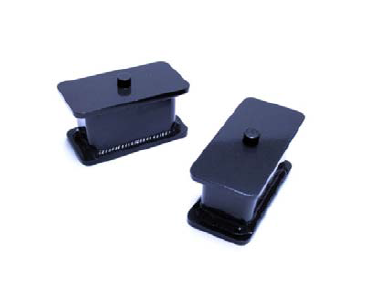
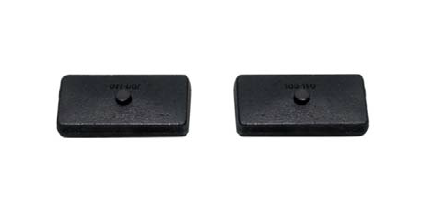
PRIOR TO INSTALLATION:
1. Factory service manual is recommended to have on hand.
2. Secure and properly block vehicle prior to beginning installation
3. Always wear safety glasses when using power tools or working under the vehicle
4. Modifications to any part will void the warranty associated with that product.
After removing parts from vehicle, save hardware for reinstallation
IT IS RECOMMENDED THAT YOU HAVE YOUR VEHICLE’S ALIGNMENT CHECKED WHENEVER INSTALLING NEW TIRES. IT IS ALSO RECOMMENDED THAT YOU ADJUST YOUR HEADLIGHTS WHENEVER YOUR VEHICLE’S RIDE HEIGHT IS ALTERED.
1. Using an adjustable jack, jack up the rear of the truck and support the vehicle under the frame rails using jack stands. Keep the adjustable jack under the axle for height adjustment.
2. Remove tires and wheels.
3. Remove factory shock absorbers, retain factory hardware.
4. Remove factory u-bolts on one side only, lower the axle using the floor jack and install the new block ensuring that the short side is facing the front of the truck. Blocks are tapered to correct drive line angle and only effective if installed the correct way.
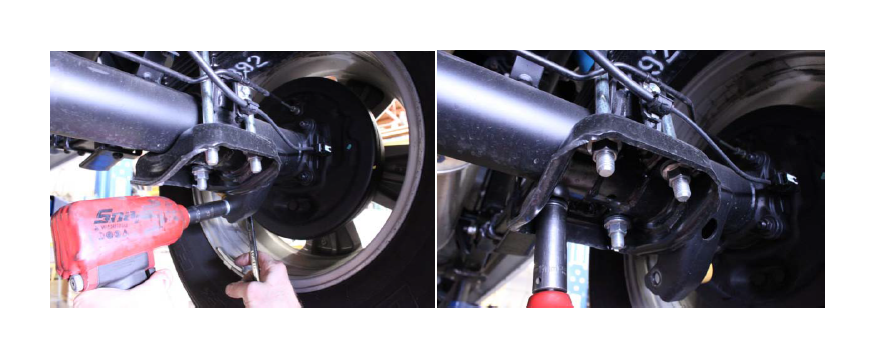
**Maxtrac 3” and 4” fabricated blocks come with two center pin holes, the hole that is off-center is intended for 4 door GM 1500 trucks ONLY to correct drive line plunge**
5. Use the floor jack to lift the rear axle, keeping the pin aligned, and install the new ubolts and hardware, torque to 100ft/lbs.
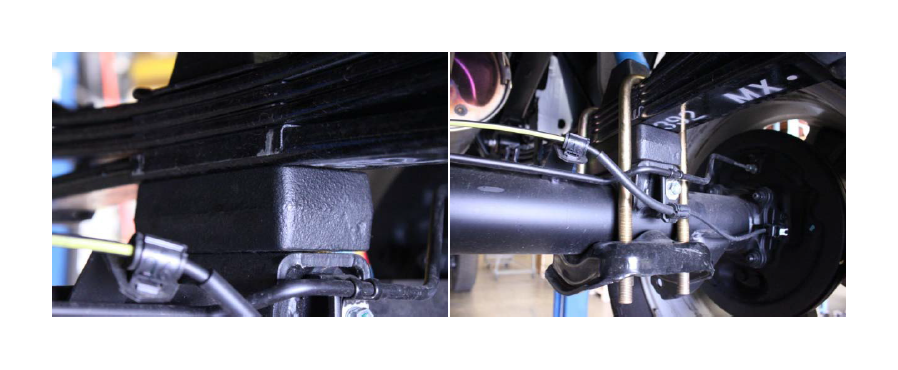
6. Re-install stock or aftermarket shock absorbers, and repeat steps on the other side. After, check for slack in any brake lines, ABS lines, and E-brake cables. If any of these are too tight, make adjustments to ensure they are not stretched when the axle droops out.
7. Install wheels and tires, set vehicle on the ground.
